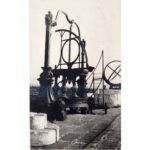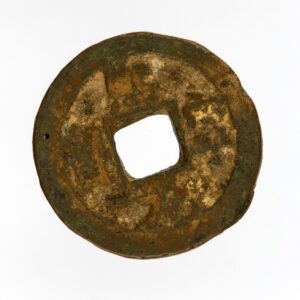Photography Ascent to the Qinian Hall at the Temple of Heaven
A black-and-white photograph showing the imperial entrance to the Qinian Hall (Qiniandian 祈年殿), which literally means “Hall of Supplications of the Year”. It stands in the Temple of Heaven (Tiantan 天壇) in Beijing as the central part and the main hall of the complex. It was built in 1420 by the Yongle Emperor (reigned 1402–1424). Here the emperors of the Ming and Qing dynasties performed the rites of heavenly worship twice a year. In Qinian Hall, on the day of the summer solstice, the emperor made offerings to the heavens and the ancestors, asking them for favour for the coming half year. In literature it is often called “Hall of Prayer for a Good Harvest”. It is the oldest and most famous part of the Temple of Heaven complex.
The imperial entrance to the 6-metre-high marble platform with a white marble balustrade (hanbai yushi 漢白玉石) is distinguished by its central location and marble slabs with rich reliefs. One slab belongs to each ... more
A black-and-white photograph showing the imperial entrance to the Qinian Hall (Qiniandian 祈年殿), which literally means “Hall of Supplications of the Year”. It stands in the Temple of Heaven (Tiantan 天壇) in Beijing as the central part and the main hall of the complex. It was built in 1420 by the Yongle Emperor (reigned 1402–1424). Here the emperors of the Ming and Qing dynasties performed the rites of heavenly worship twice a year. In Qinian Hall, on the day of the summer solstice, the emperor made offerings to the heavens and the ancestors, asking them for favour for the coming half year. In literature it is often called “Hall of Prayer for a Good Harvest”. It is the oldest and most famous part of the Temple of Heaven complex.
The imperial entrance to the 6-metre-high marble platform with a white marble balustrade (hanbai yushi 漢白玉石) is distinguished by its central location and marble slabs with rich reliefs. One slab belongs to each of the three floors of the platform. They are arranged one above the other and run down the middle of the staircase. A relief with clouds is carved on the lowest slab, followed by a slab with a phoenix, and a dragon is carved on the top slab.
The entire area around the Qinian Hall is only a few hectares in size and is part of the 273-hectare Temple of Heaven complex, now located in southeastern Beijing. It consists of a square courtyard surrounded by a wall. The venue can be reached through three entrances that connect the temple with other facilities such as the ritual kitchen in the east, the Changing Terrace, and the Butcher’s Pavilion. The last emperor to bow to heaven at the Temple of Heaven was Yuan Shikai 袁世凱 (reigned 1915–1916), who for several months tried unsuccessfully to revive the monarchy. This marked the end of a centuries-old tradition. Today, the Temple of Heaven is on the UNESCO World Cultural Heritage List, as it is the largest religious complex in the world.
The photograph is the 176th of 449 photographs of Beijing and its surroundings in the album of Ivan Skušek Jr., purchased during his stay in Beijing (1914–1920). In the handwritten inventory of the album, the photograph is referred to as Himmels-Tempel: Aufgang zum Haupttempel. (DZ, MV)





































Do you have a comment or additional information about the subject?